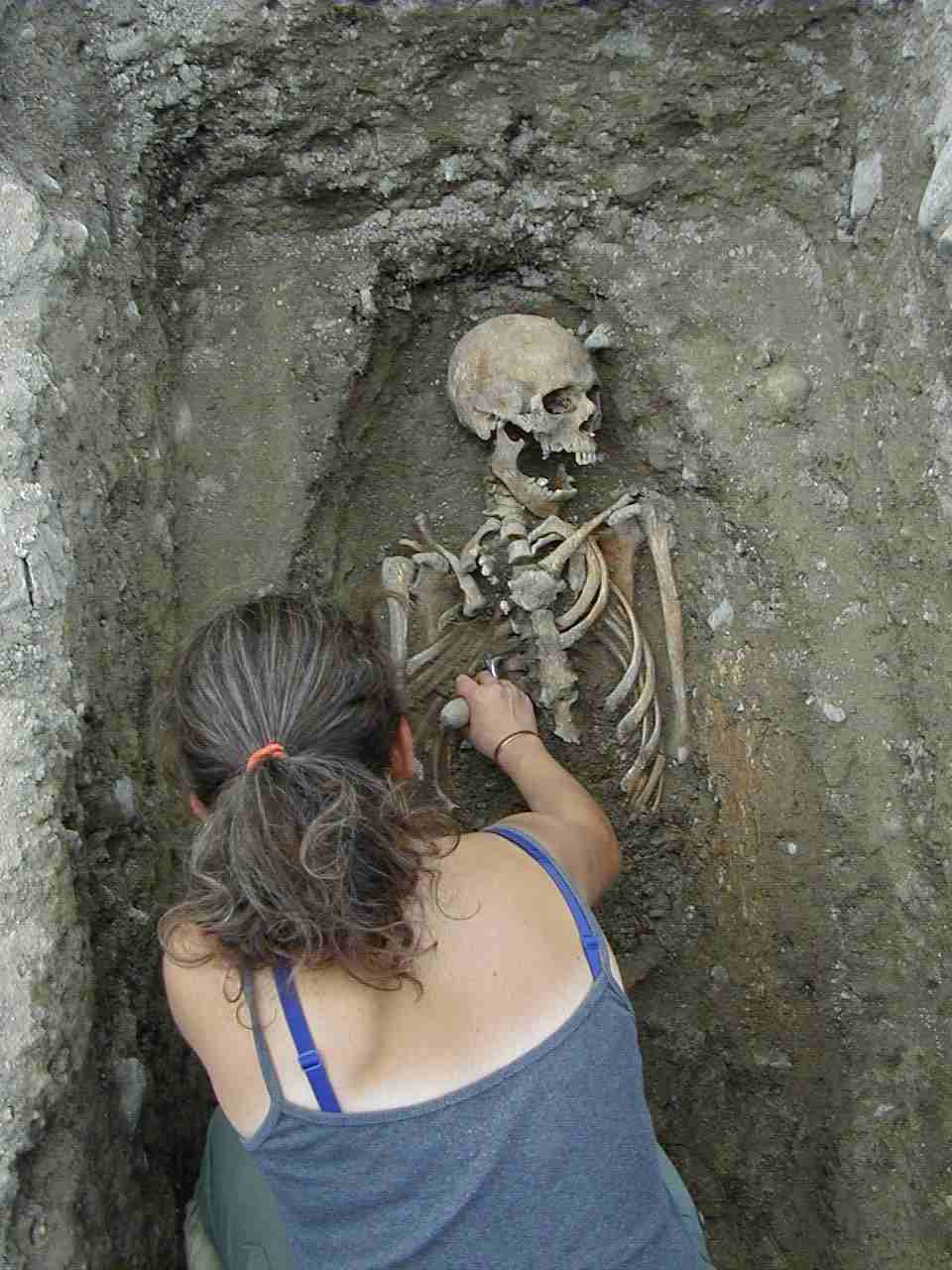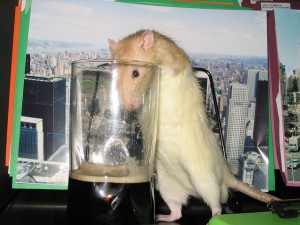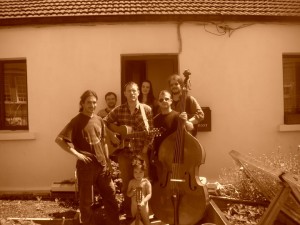Continuing our series of old posts (to mark our 10th year in business), ones we feel were good, prescient or elicited some good conversation or debate, this post was first published in January 2009. Posted in response to a controversy about how we treat and curate our dead, initiated by then IT journalist Sarah Carey, it’s a debate that will undoubtedly go on and on.
The debate about how we excavate, treat and curate our dead received some airing at the end of December, with Irish Times journalist Sarah Carey raising the issue in a piece recently, subsequently debated on the Pat Kenny show, resulting in Pat Wallace (director of the National Museum of Ireland) deciding to return some of the subject remains (recovered during a road project) to County Meath. This isn’t the first time we’ve discussed the treatment of the dead on the blog (see our post here on ‘Displaying the Dead’), and is unlikely to be the last. Sarah Carey, (her blog GUBU is here) intriguingly, identifies the Museum as the enemy and she asks Ronán Swan, chief archaeologist at the National Roads Authority (NRA) for an opinion – and identifies him as ‘one of the good guys’ (and her Mother was cross too – “They’re like beetles crawling around in the dirt,” she complained. “I’m sick of looking at them”).

I’m getting awfully confused as to who the bad guy archaeologists are now. Is it the consultants who remove the burials, the clients who pay for it or the museum which displays or curates them?
The “Kingship & Sacrifice” exhibition in the Museum (the exhibition is based around the theory that human sacrifice and the deposition of the victims in bogs along tribal boundaries is related to sovereignty and kingship rituals during the Iron Age) has also apparently been at the receiving end of some criticism from a small number of visitors and the recent Tutankhamun tour drew the opprobium of some (well – one journalist at least).
There is ongoing debate in communities throughout the world regarding the ethics and standards applied to the excavation, retention and display of human remains. It’s a complex debate and all proper professionals make every effort to avoid causing offence and to treat the remains of our ancestors with the utmost respect throughout the process. Every archaeologist and museum professional would recognize and acknowledge that the human remains which we work with were once part of a living community – in other countries their treatment would/should always be influenced and led by the concerns of Indigenous peoples and in the context of Ireland the concerns of modern religions, beliefs and philosophies are genuine considerations whenever we deal with human remains.
But it must also be acknowledged that human remains recovered during scientific excavation are a hugely important scientific resource. They have great research value and can tell us a great deal about how our ancestors perceived death and disposed of the remains of their loved ones. The remains in the possession of archaeologists and the museum represent a vast source of information, providing a wider resource to advance knowledge in the history of disease, the effects of hunger and disease on our forebears, the field of forensics etc.. Osteoarchaeologists (such as our Camilla) use a variety of methods to investigate the lifestyles and living conditions of our ancient dead. Human skeletal remains can provide a wide range of information, e.g. demography, sex and age profile, stature and diseases. Furthermore the analysis can provide details of diet, general state of health and traumas caused to individuals and can even indicate occupation (such as with one of our Eyre Square skeletons who may have been a longbowman).
According to a recent Heritage Council publication an estimated 15-20,000 individuals were excavated from archaeological sites in Ireland in the period from 1989 to 1998. A very rough estimate of the amount excavated since would probably bring that number up by another 15,000 or more (admittedly based on very flimsy data – Moore Group has excavated almost 500 in the past 7 years) dating from the Mesolithic period (around 9,000 years ago) up to recent times. In the case of the burials we have excavated, in all cases these remains were unexpected and unanticipated.
According to the Heritage Council
Excavated human remains are defined as ‘archaeological objects’ under the National Monuments Acts. A 1994 amendment to the Acts vests ownership in the State of all ‘archaeological objects’ discovered since this date. There is no consensus on the meaning of the term ‘ancient’, save that it seems to be shifting to an ever later period; in this, most courts would probably defer to the opinion of an archaeologist. Most ancient human remains will be considered of some archaeological interest by archaeologists.
The Heritage Council outlines four fundamental principles to serve as a framework for conduct and decision-making in the area of the treatment and of human remains:
- The conduct of archaeologists must be within the law
- Ancient and historic human remains should always be treated as the remains of people
- Ancient and human remains comprise a finite scientific resource
- There is a legitimate public interest in the treatment and disposal of human remains by archaeologists.
In most cases, where possible, the ideal outcome of an archaeological assessment is avoidance of human remains – preservation in situ. The cost of excavation and removal of human remains (as well as the potential delay) is often convincing enough to a client, but in some cases avoidance is not possible.
Although ancient human remains are legally as defined ‘archaeological objects’ (ie.. in the ownership of the State) they obviously differ from conventional archaeological objects. The Director of the National Museum is empowered to ‘dispose’ of these objects at discretion, either by taking them into permanent curation or by waiving claim of ownership.
According to the Heritage Council:
Legal ownership of human remains not retained by the Museum is not straightforward. Are they the property of the excavating archaeologist or the landowner of the site of discovery? Common Law holds that there can be ‘no property in a corpse’ but should a court decide to regard ancient human remains as ‘chattels’ the landowner will almost certainly have superior title to that of the finder/archaeologist, even if the archaeologist is excavating under licence and with the landowner’s permission. A landowner could in such circumstances demand that an archaeologist return ancient human remains for reburial.
However permanent curation allows the potential for assemblages to be re-assessed in later years when analytical methods have advanced, or to answer new research questions. Assemblages are currently kept at the Museum’s storage facility at Collins Barracks in Dublin. Bones are cleaned and dried and then packed in an acid-free material by the licensed excavator before delivery to the Museum, where a catalogue of remains – the ‘Bone Coffin Lists’ – is maintained. Any individual with a legitimate research interest is allowed access to the collection.
Where possible reburial in controlled conditions (such as using accessible vaults or the accessible ‘keeping places’ they have in Australia) could represent a satisfactory compromise. However, this is not always an option. In some cases, for instance, reburying human remains in close proximity to their original location runs the risk of disturbing further remains. In other cases there is simply no immediately accessible land available to do so. It is also palpably the case that some assemblages of human remains are far too important to be housed in an unsecure location. Whatever the case, this is obviously a debate that is sure to run and run.




